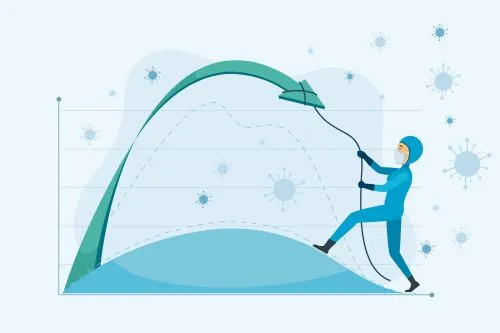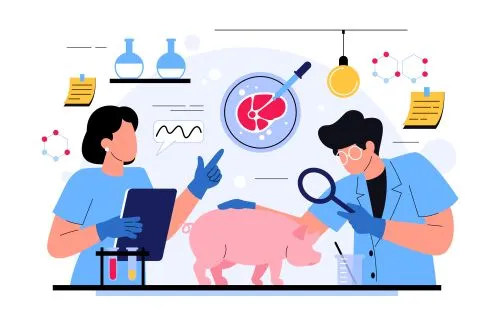1044

With a smaller carbon footprint than glass, Abel & Cole's reusable plastic milk bottle is much less humble than its appearance suggests, DairyReporter announces.
Focusing on Innovation
Plastic waste has long been a concern for British adults. However, while more consumers have placed responsibility for reducing single-use plastic on producers, retailers, and the government, according to a 2019 YouGov survey, opinions have since become more balanced.
Still, three out of ten Britons support a total ban on single-use plastics, while 15% believe increased recycling is the best way to reduce plastic waste.
But a total ban is easier said than done, and when it comes to food packaging, the picture is even murkier. In the dairy sector, major supermarkets like Waitrose and Morrisons have tried using plastic bags instead of single-use milk bottles, only to find that the format did not appeal to consumers.
More often, producers have aimed to improve the recyclability of packaging, either by opting for packages made with higher levels of renewable or recyclable materials or by making changes to popular formats to ensure that single-use plastic can be easily recycled.
And while most milk is sold at retail, an estimated 3% is delivered directly to customers through door-to-door deliveries, according to Dairy UK's estimates. However, this narrow market share did not deter one of these DTC players from innovating to improve the sustainability credentials of milk packaging.
More Eco-friendly than Glass
Last November, Abel & Cole's grocery delivery service announced it had chosen plastic to create a refillable milk bottle, launching the Club Zero Refillable Milk program. Far from a step backward, the chosen material came as a revelation to Hugo Lynch, Abel & Cole's sustainability leader.
"When we started a project on how we could reduce single-use plastic consumption in our milk deliveries, we were committed to finding the most sustainable and scalable solution," he opened. "We wanted to reduce waste, but our decision-making also had to focus on a real reduction in the product's carbon impact."
In their initial research, the team modeled the use of glass, aseptic cartons, high-density polyethylene (HDPE) – commonly used for single-use milk bottles – and polypropylene (PP), a dense monoplastic. The aseptic carton had lower emissions than single-use HDPE but couldn’t be reused and was difficult to recycle. Glass, however, performed the worst.
"We were shocked by the results we got from the life cycle assessment when looking at transitioning back to traditional glass milk rounds," Lynch explained. "Due to the increased weight of the packaging, glass would require over 4 uses to match the emissions of a single-use HDPE bottle and 16 uses to reduce emissions by 50%."
Using glass also posed other challenges. "Glass can be an unsafe choice due to its fragility," Lynch added. "In handling glass, under the health and safety guidance typically followed by companies, if there's a breakage in a crate, all bottles in that crate are destroyed to prevent injury during the sorting process. For our business, this meant unacceptable waste."
Regarding PP glass, "we found we could achieve a 50% reduction in emissions much faster – after 5 uses – because the lighter weight of the glass resulted in fewer emissions to produce, transport, and recycle at the end of its life," Lynch said.
The Response to a Tough Question
The team now faces a "tough question": what if plastic isn't always the enemy?
And so, after three years of trial and error, Abel & Cole launched the UK's first packaging innovation: refillable plastic milk bottles.
"We designed a 100% polypropylene (PP) bottle that would fit with existing filling infrastructure and supply chain without needing costly machinery modifications or posing health and safety risks and can be recycled when it reaches the end of its life," he told us.
"We were able to access high-quality raw material and rigorous chemical testing was done to ensure the bottles were ready for refilling and reuse.
"We reverse-engineered the caps of the bottles and footprint, so we could guarantee they could be washed easily and efficiently, with no change to the production process. This meant we could keep costs low and could roll out the new scheme to all customers with no price increase, as long as we kept a 75% return rate, which we managed to achieve in the first 6 months of launch."
Lynch said that PP's low porosity and higher melting temperature allowed for more reliable cleaning and there was no risk of leaching harmful chemicals into the milk, which was verified through extended migration and challenge testing.
Each milk bottle also comes with an "early warning" system to show if a bottle is nearing the end of its life. "Trials confirmed that labeled bottles could be reused up to 16 times before the label shows signs of degradation," he added. "This helps us track the bottle's lifespan and 'withdraw' each bottle when it reaches this point, which is then recycled."





